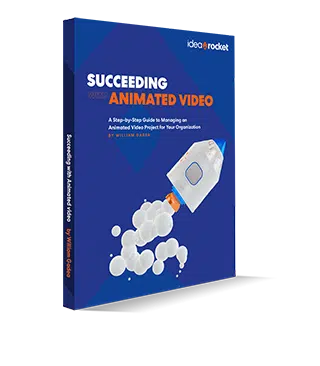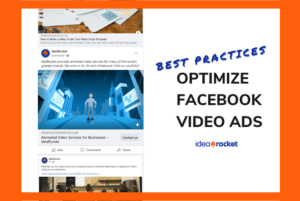Heading to a trade show soon? Events might look a little different. Masks, social distancing, and reduced attendance could make it harder to connect on the trade show floor. Even after these measures fade away, trade shows may never return to their pre-2020 style. All of these factors make video a more valuable tool than ever.
A well-designed video captures the eye and gets your message across, even if you can’t talk to an attendee face-to-face. If the trade show switches to a virtual format at the last minute, your videos can still work. To help you prepare, here are the trade show video best practices for a pandemic and post-pandemic world.
Before the Trade Show
Get started early! Sharing an intro video via email can be a great way to make your presence known to attendees before they hit the trade show floor. Use video to inform your contacts that you’re attending, where your booth is located, and any other details they may need if they want to schedule a meeting while you’re in town.
If your company is hosting a panel, talk, or special event, you can share a preview video. Think of it like a movie trailer that gives them a glimpse of what to expect from the main event. Of course, don’t forget to include the essential details like the time and place of the presentation. If you plan to offer a virtual version of your presentation, mention where and how they can access the recording.
You don’t have to limit yourself to email. Drum up excitement by posting your promo video on your website or social media. But be strategic. Tailor your messaging when speaking directly to attendees, and broaden your scope when communicating to a larger audience.

Trade Show Video On The Big Stage
If you’re gearing up to address a big crowd, video can be your best sidekick. Video can help drive the narrative. You can break up a long talk with compelling imagery and keep the energy high even if attendance is lower than usual.
Apple is known for its dramatic and well-timed product releases—a tradition that Steve Jobs spearheaded with his famous iPhone release speech in 2007. Since then, Apple has incorporated video to introduce their demos in a spectacular fashion. Check out one of our favorites – when CEO Tim Cook first introduced the Apple Watch in 2014:
And of course, don’t forget to capture your talk on video. You don’t want anyone who is attending virtually to miss out. Check with the venue to see if they plan to record and how you can get a copy. Send an email post to social with a link to the presentation as soon as you have a video ready.
On The Trade Show Floor
The old days of trade show booths jammed side-by-side might be over. You may have more space at modern tradeshows, but that doesn’t necessarily translate to more foot traffic. Some organizers are limiting attendance while others are spacing out booths to help with physical distancing. It’s essential to capture the attention of attendees quickly.
Video can help. Adding a large video screen to your booth can attract eyes to your message. With a quick, visual introduction, you can share your message even if you can’t talk to every attendee face-to-face.
When setting up your booth, make sure you have a large screen that’s positioned in a way that’s easily accessible to viewers. Keep it elevated to expand your reach and attract attendees from a distance.
You might also consider adding large QR codes where they will be easily visible to passers-by. This could be on the outside of your booth, banners and signs, or flyers and brochures. That way, people can simply scan a code to watch your video on their smartphone. This is especially handy for attendees who might be uncomfortable gathering in a crowd around your booth.
Obey The Five-Second Rule
Trade show floors are designed to let attendees wander and explore. The upside of this is increased traffic and visibility. The downside? Attention fatigue.
You have a very limited window to capture a trade show prospect’s attention, only about five seconds. That’s how long it takes for someone to stroll past your booth, turn their head, and assess the value of stopping. Five seconds. Doesn’t sound like much time, does it?
Video can help you make the most of that time. But don’t rely on voiceover to carry your message, the trade show flow can be a noisy place. Rely instead on eye-catching visuals, a branded color scheme, and readable text to convey one, clear message.
Remember that the amount of time you have to capture someone’s attention is roughly the time that a YouTube pre-roll ad. You have to be interesting immediately.
The Power of Imagery
Normally, we’d recommend having tablets or smaller monitors that attendees can interact with once they’re inside your booth. However, touch screens and close quarters might not be as attractive today as they were a few years ago. This is where QR codes can come in handy again.
Using these scannable codes, attendees can pull the video up on their own phones while your sales team walks them through the product or service. Visual aids can help put your sales narrative into a more tangible perspective.
Make sure your trade show explainer video clearly conveys what you do, and how your product can solve your potential customer’s needs. Put your product or service at center stage and show off the benefits. It’s a great way to create excitement and attract motivated prospects.
Captivate With Video Captions
Did we mention that trade show floors are loud?. The music or voiceover that could add momentum to your main stage video may end up meaningless here. It could also become a real turnoff (and give your sales reps a headache) when played on repeat for hours.
Captions to the rescue. Adding captions to your trade show video allows you to inform, educate, and engage, without all the noise. While on the trade show floor, you might want to completely skip voiceover, and just use text and visuals to tell your story.
Rubbermaid did a great job with this quick demo video, which explains their product offering without saying a word.
If you choose to use text in your video, make sure you select a heavy (or bold) font weight. That makes your text easier to read at a distance. Pick a clear, readable typeface that attendees can understand at a glance.
If you do decide to add music, pay attention to the mood you’re setting. Music licensing sites will let you browse for music by mood keywords like upbeat, confident, and so on. But remember, that your soundtrack is only there to support the most important part of your video—the visuals.
After the Trade Show
When the trade show is over, follow up. Send out a video recap of the event. It might include clips from the showroom floor, a copy of your booth video, or other footage captured during the event. If you hosted a talk or exhibition, share that as well. Of course, be sure to invite people to contact you to start or continue conversations from the event.
Consider following up with a blog about your experiences or social media highlights featuring snippets from your presentation. Also, just because you’ve created a video for a trade show doesn’t mean you can’t use it in other places. Repurposing content can help your team maximize the potential of your explainer video.
Trade Show Best Practices Summarized
Trade show videos can generate excitement, educate prospects about your product or service, and help you stand out from the crowd. They can help you make the most of your time on the trade show floor, even if masks and social distancing put a damper on attendance. Most importantly, stay flexible. Your trade show might switch to a virtual format at the last minute. Attendees might change their plans. With video, you’ll be prepared to stay connected no matter how circumstances change.
Finally, remember that your trade show video strategy should encompass the entire journey—from drumming up excitement ahead of time, to after the show ends. Don’t forget to reach out to people who are attending virtually.




